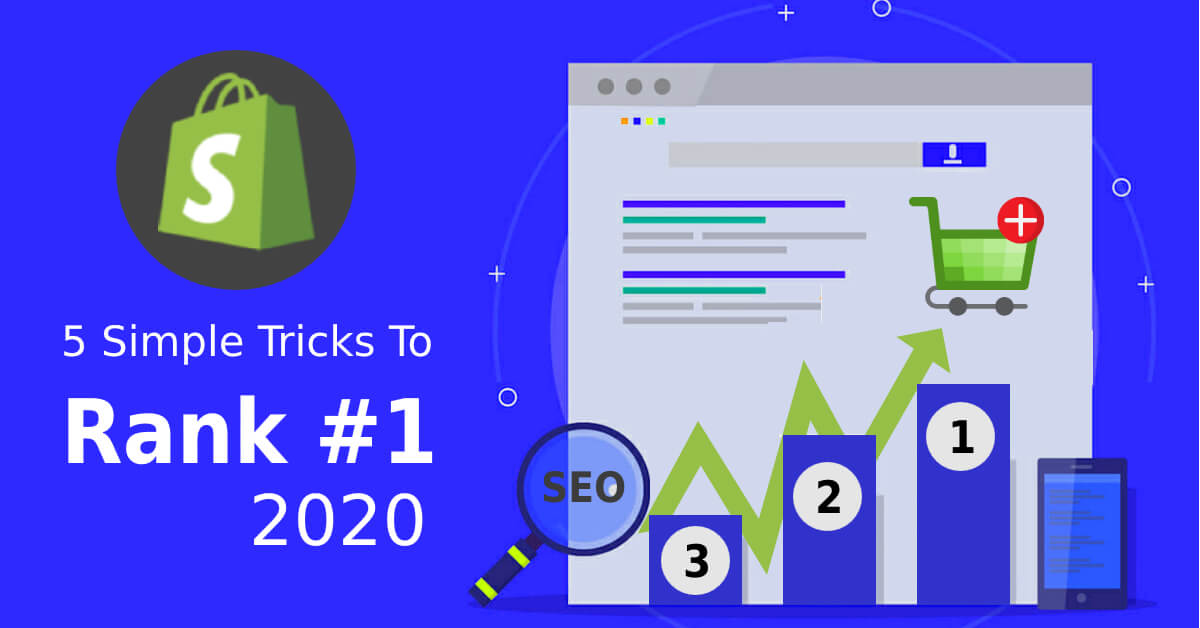
Long gone are the days when things like “If you build it, they will come” may have actually worked for retailers to attract customers. Today, in the digital era, the competition has become so intense that you need more than an awe-inspiring eCommerce store to cut through the noise and drive customers. Luckily, Shopify comes with a load of built-in SEO features that allow merchants to optimize their online store without toiling hard. This insightful post will walk you through some simple yet effective Shopify store optimization tips that will help you drive tons of traffic, qualified leads, sales, and profits. Let’s dive in.
1. Do Exhaustive Research To Find Out The Right Keywords
First things first – conduct comprehensive yet thoughtful keyword research if you want to drive the right customers to your Shopify store. Always remember that keywords are the building blocks of an eCommerce store. They are the exact words or phrases that your prospects type in the search box to find the products they are looking for. Ergo, the best possible way to come up with the right set of keywords to target potential buyers is to put yourself in your customer’s shoes. Now, think of the search terms that you would use to find products that you are selling. You can also take cues from different places like:
- eCommerce forums, Reddit and subreddits related to your niche
- Quora
- Social media platforms and hashtags
- Meta titles, descriptions, and image alt-text used by your competitors
Apart from these platforms, you can also take keyword ideas from the popular keyword research tools like Google Keyword Planner, Ahrefs Keywords Explorer, and KeywordTool.io, etc. By using any of these tools, you will get a fair idea of the keywords that you need to target to drive an influx of traffic, leads, sales, and profits. You can also hire a Shopify expert to get an in-depth understanding of the keywords’ search volume, competition, CPC, trend, and the level of difficulty. Furthermore, having an expert on your side will also allow you to prioritize on the combination of keyword metrics that can help you outrank your competitors.
2. Start Optimizing For The Targeted Keywords
Once you have a list of keywords with you that you need to target, it’s time to strategically place them in your content to optimize your Shopify store. You can place the keywords across your website but if you don’t know from where to begin, you can refer to this structure:
- Meta Title: This is one of the most significant parts of website optimization. It appears on the organic search results and decides your store’s click-through rate (CTR). Let’s look at this example:
You can clearly see how the store merchants have placed the targeted keyword i.e. ‘Birthday Gifts’ just before their store name. Also, the generic keyword – ‘Birthday Gifts’ probably has a higher search volume than your brand name, so placing it in the beginning can help you better target your prospective buyers. Here’s how you can change the meta title:
Go to Online Store > click on preferences to change it.
Meta Description: It is a short excerpt that gives your customers a fair idea of what the page is all about. Similar to the meta title, placing your targeted keywords in meta description can improve your website click-through rate (CTR). While writing the meta description, always make sure that it is enticing enough to convince customers to click on your store’s organic search result. Have a look at this perfect example.
Here’s how you can change the meta description. Go to Online Store > click on preferences to change it.
Image Description and Alt Tags: Albeit Google has become smart enough in the past few years, it still can’t read an image. For instance, if you are selling olive green canvas shoes, you have to tell Google that it’s a pair of olive green shoes. For the same, you need to change the default image name to ‘olive_shoes’ and add an alt-text before uploading. When adding an alt-text, always make sure that you include targeted keywords so that Google can easily read it and rank it higher in search results.
Product Copy: When writing a product copy, always ensure that it’s highly persuasive and comprises all your target keywords. Another important thing that you need to keep in mind is that your product copy should be 100% original. Never copy the description that your manufacturer provides since there are chances that the same description is being used by many other store merchants. And, we all know that Google hates copied content and penalizes the sites that use duplicate content.
3. Don’t Forget To Set Up Redirects For Out of Stock Product Pages
When running an eCommerce store, there are chances that you may run out of stock or discontinue selling a product after a while. If you delete that page, any linking done to that product page will lead customers to a 404 error page. This not only infuriates your customers landing on that product page but also increases the bounce rate of your website, which negatively impacts your store’s performance. Ergo, it is strongly recommended to create 301 redirects for all your old product pages to the new ones. If you don’t know how to set up redirects for your Shopify store, you can seek Shopify eCommerce solutions from an expert who knows the drill.
4. Create A Strong Backlinking For Your Shopify Store
Having a strong backlinking profile of your Shopify eCommerce store can help you outrank your competitors and rank higher in search results. Google always gives more preferences to websites having strong authority on the internet. In other words, Google looks at how many other websites are linking to your site. Then, it uses its algorithm to determine your organic search rankings based on the authority of the sites linking to your store. For instance, if you have earned a backlink from The Wall Street Journal, The Huffington Post, Inc42 or any other top-rated site, Google will understand that you have some real authority and rank you higher in search results.
There are a multitude of ways to earn a backlink for your Shopify store. You can either write a guest post to bloggers of your niche or you can send out a press release to get coverage on the top media sites. You can also connect with top influencers and ask them to review your products on their websites and social media networks.
5. Leverage The Power Of Blogging
Shopify comes with a built-in blogging feature but unfortunately, it is one of the most under-used features by store merchants. By leveraging the potential of blogging, you can not only build a strong audience base but also gain more exposure, and drive an avalanche of traffic, sales, and profits. If you are not sure what to write about, you can take cues from your competitors’ website or you can also use tools like BuzzSumo, Ahrefs, Social Animal, Sprout Social, and Mention, etc.
Over To You
Shopify comes with a host of in-built SEO features, but with a few tweaks and tricks discussed in this insightful post, you can surely surge ahead of your competitors. This comprehensive Shopify SEO guide can help you drive tons of traffic, qualified leads, and conversions. In case you need an expert on your side to build a successful eCommerce venture, you may opt for eCommerce content management services from our trained and experienced professionals. We have optimized hundreds of Shopify-powered eCommerce stores and have driven their sales and profits to a whole new level. Get in touch with industry experts by dropping a line to mail@quiktekinfo.com.


